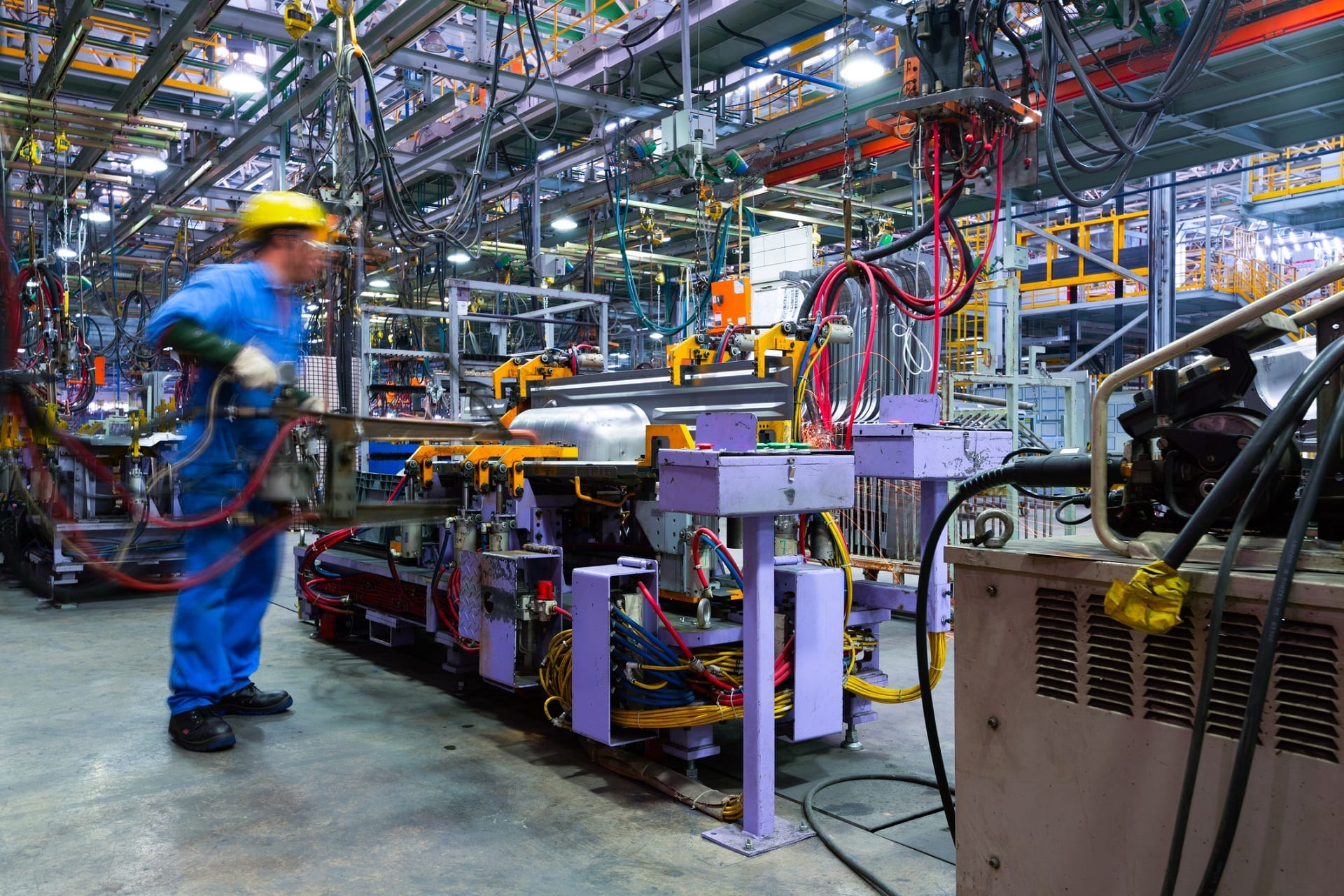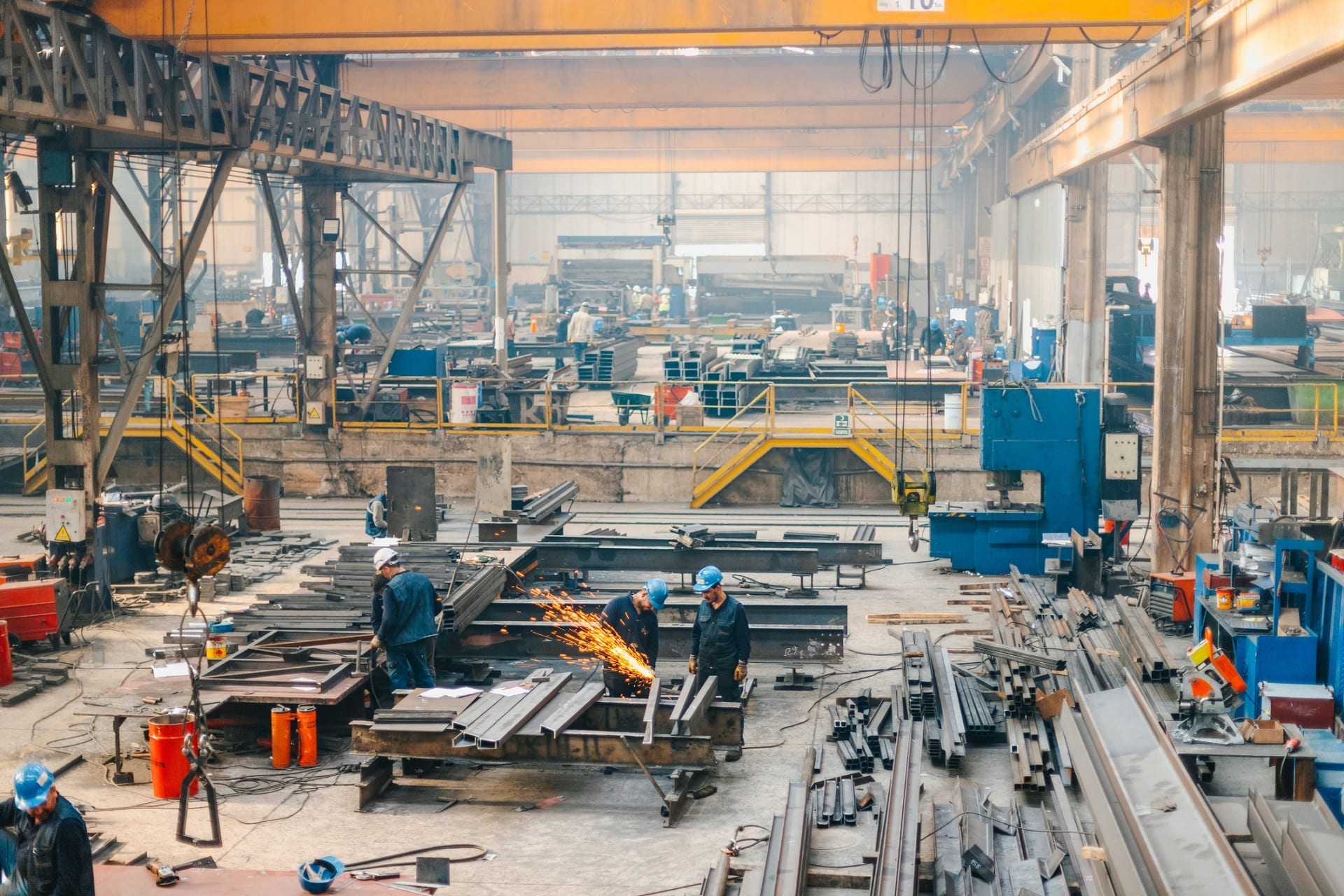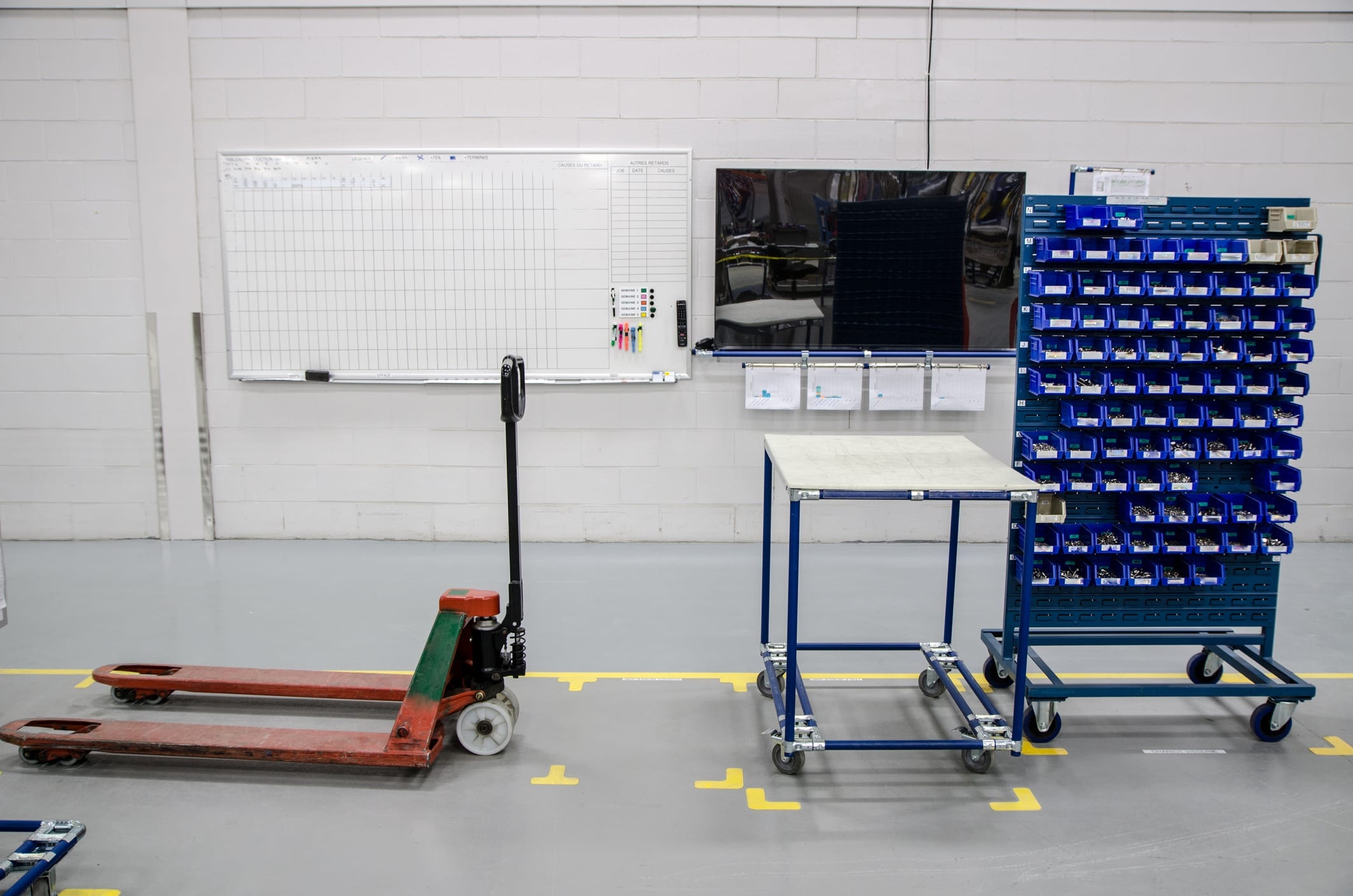The 6S lean management originates from methodology created by Toyota Production System between the years of 1948 and 1975. This procedure enabled the Japanese company to produce higher quality products faster with less waste and inventory than the competitors.
While the fundamentals of 6S management were created decades ago, the benefits of the methodology persist even in today’s conditions. So, what are the core principles of the 6S in manufacturing?

What Is 6S
Before explaining 6S in manufacturing, we need to refer to 5s lean management as the base of the principle. It is a set of five steps to ensure proper organization of items and working areas to save costs, reduce waste, improve workplace management, and increase productivity.
The 5s principle is most beneficial in scenarios where a company has to deal with complex working processes and asset management, therefore, it is mostly used in manufacturing.

It originates from five Japanese words Seiri, Seiton, Seisō, Seiketsu, Shitsuke, which translates as sort, set, shine, standardize, and sustain. In the 6S concept, we add safety as the sixth step, which concentrates on ensuring workplace safety and risk assessment.
Therefore, manufacturing companies use the 6S to achieve an overall improvement in efficiency, product quality, a satisfaction of employees, and mitigation of safety risks.
What Are the Benefits of 6S in Production?
Implementation of 6S in manufacturing can lead to a number of important benefits, and manufacturers use the methodology to solve some of the most critical pain points. The standardized management of items and workplace helps in achieving:
Costs savings and better waste managements
The 6S helps to predict and schedule the maintenance of the tools, get rid of unused items, efficiently use components with closing shelf life (e.g., chemicals or batteries). This practice allows for investments, orders, and costs optimization.
Higher efficiency and fewer machine downtimes
Thanks to the effective organization of work items, managers and employees have a better overview of what equipment they use, when, and how often. Therefore, they can store most used components closer to a shop floor, order missing equipment in advance, or integrate predictive maintenance to prevent machine breakdown.
Production quality increase
When work area is clear, the workplace is safe, and components are on reach, manufacturers can focus more on the quality of assembled products. If using inspections software to follow 6S manufacturing, it is easier to integrate it also for quality audits. This brings further benefits in maintaining and increasing customer satisfaction and company’s results.
Less stressful environment for employees and better cooperation
Properly integrated 6S workplace organization includes documentation, guides, and manuals for employees. Knowledge turned into step-by-step workflows enable workers to follow the standards easier and ensure they follow the best practice. The practice eases the stress load and also allows for improved onboarding as manuals and guides are immediately available to newcomers.
Fewer accidents/safety increase
When following the 6th S – safety, managers can work on minimizing short- and long-term hazards that can threaten the physical and mental health of employees. Workers feel safer, which further leads to improved focus and lower stress.
6S Manufacturing Principles in Detail
The 6S concept in manufacturing is based on these six steps:

Download the infographic in PDF: 6S Lean Management Explanation
Safety
While added to the original 5S procedure as the last step, we are going to talk about safety first.
It is a critical topic nowadays, often required by legal regulation. Safety precautions should be one of the most important processes integrated into the day-to-day operation, especially in more hazardous environments. Like manufacturing factories are.
With the safety step in 6S lean management, you want to make the workplace safer for workers. Mitigation of hazards and near-misses starts with their identification.
Document all safety risks during every stage of the 5S management and you are on a good way to improve the working conditions. Afterward, set up regular safety checks and preventive measures to keep the hazards as low as possible in the future.
Sort (Seiri)
Do you know where are all the tools and components that workers use located? How many of them do you store and which ones you don’t use at all? No? The fundamental process of the 6S, sorting, is specifically designed to find out all this information.
You need to identify the items placed in the working area to decide what to do with them. Optimize the process by tagging the equipment with color tags or with inspections software.
Is the item unnecessary? Tag it with the red for further processing. Is the equipment misplaced and should be located in a different work area? Choose a different tag to visualize the difference.
Equipment Maintenance Checklist
Download a free Equipment Maintenance Checklist template to provide guidance to workers handling equipment inspections
Set (Seiton)
After sorting out which items you need to keep, relocate, or throw away, it is time to do so. Organize the workplace to be as functional as possible.
Frequently used equipment should be quickly accessible for workers. Keep in mind that stored items shouldn’t block the movement area or possess risks for employees (e.g., stock stored in heights without fall protection).
Also, it is beneficial to document the process right from the beginning to maintain efficiency.
It is harder to write down manuals and guides afterward. Sometimes, you can forget about a key step that can present a risk for the next inspection. Or you will have to start from the beginning as the process will be incomplete.
Again, you can keep the guidelines on paper, in excel sheets, or also consider to utilizing mobile forms. Choose whichever fits your operation the best.
Shine (Seisō)
Make the workplace ‘shine’ in the next step of the 6S lean management principle. It is time for a proper cleaning procedure to make the area neat and tidy.
You should set up a regular cleaning schedule to ensure it is not just a one-time action, but a standardized process followed in the future.
Standardize (Seiketsu)
This is the time where you can take advantage of the documentation and notes you made in the previous steps.
It is necessary to standardize everything that you conducted during the sorting, setting up, cleaning, and safety phases. That means you need to create some rules and instructions for conducting the steps regularly.
It may be the hardest step in 6S, but when you carried it out thoroughly, you will benefit from the process in years to come.
Write down instructions for humans and not in a vague official language. Don’t use fuzzy descriptions, be specific and descriptive. It’s the employees that will be reading them. The better you write the guide, the easier it will be to follow.
Sustain (Shitsuke)
If you have completed all the steps above, great. You are on track to implement 6S lean management in your company. But consistency is king here.
You need to follow up in the coming days, weeks, months, and years to reap the benefits. Set up and schedule regular inspections for 6S management and make it a routine for your team.
Make it a part of the operation. Assign individual tasks to specific employees. You can help workers and managers with checklists to keep up with all the steps.
Also, talk to your employees about the benefits that 6S management of the workplace brings. When they are aware of the advantages, they will be eager to proceed with the inspections regularly.
5S vs. 6S: What Is Better for You?
Nowadays, safety is at the forefront in the majority of industries. While 5S proved its benefits over decades, if you can integrate safety precautions into the steps of lean management, you should definitely go for it.
Starting With a 6S Program in Your Company
The 6S methodology proved to be a very effective in manufacturing over years. If you haven’t started with its implementation, it might be the time. By implementing 6S principles and practices, you can create high-quality products with lower budget, produce less waste, and save more time.
If you want to proceed faster, an inspection software can automate various processes within the 6S procedure thanks to checklists, mobile forms, inspection reports, or job assignments. For example, with a tailor-made 6S checklist, your employees can check if all necessary steps were completed correctly and in the right order. You can find free manufacturing checklists in Resco template library.
Digitalization of these processes also enhances data collection standardization and offers real-time updates for managers and supervisors, who can then further streamline required procedures. You can start with a free 30-day trial of Resco Inspections that comes with a free OSH risk template, you can easily customize for safety inspections in 6S methodology.



